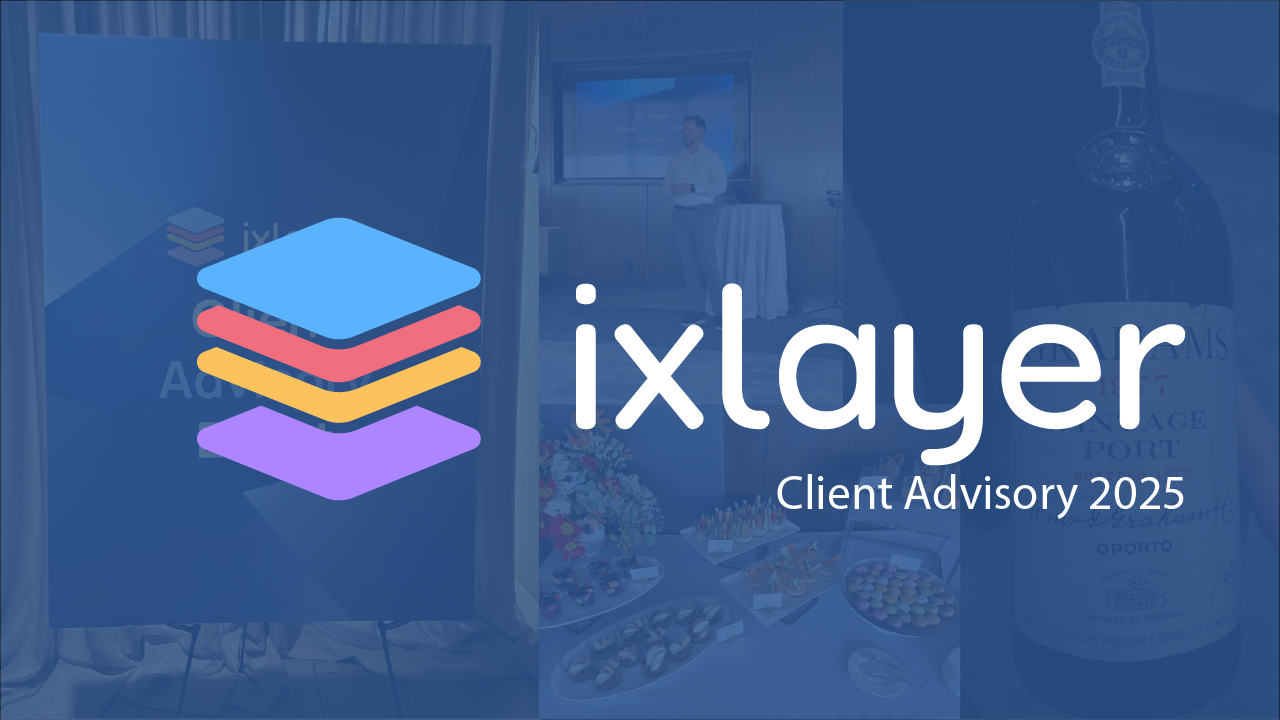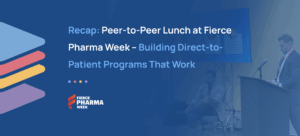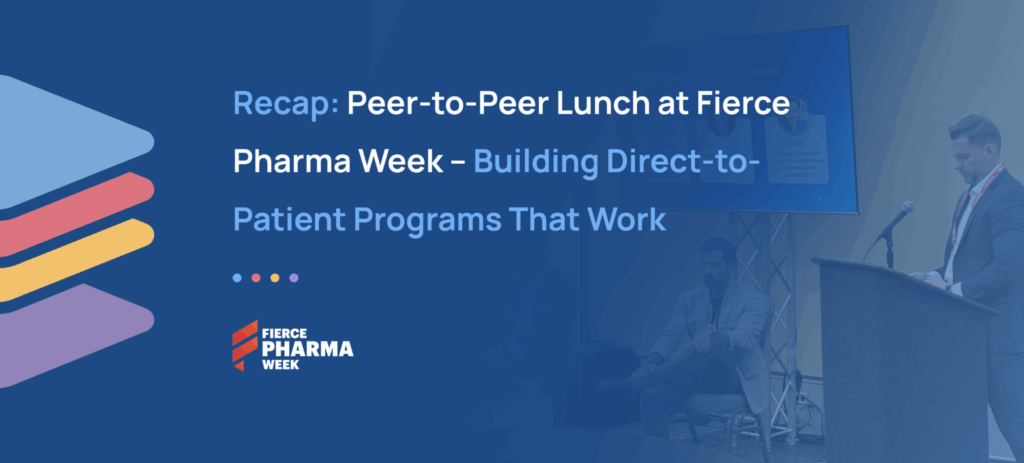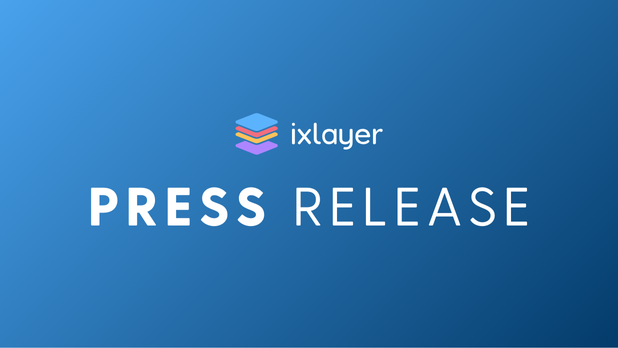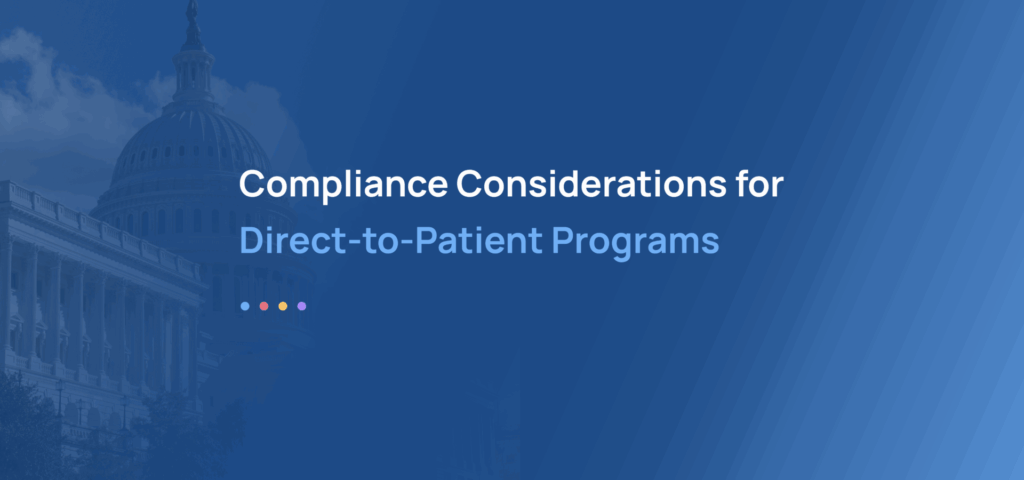In Case You Missed It: Key Takeaways from the 2025 ixlayer Client Advisory Meeting
In early March, ixlayer hosted an engaging and insightful Client Advisory Meeting, bringing together industry leaders, partners, and prospective clients to discuss the future of direct-to-patient (DTP) healthcare. The session featured a detailed presentation of our ixInsights 2025 research conducted with Ipsos, an in-depth session on compliance considerations, and an interactive roundtable discussion focused on how biopharma can enhance the patient experience through seamless, integrated digital health solutions.
If you couldn’t attend, here’s a breakdown of the key takeaways from the event.
Patients Expect More from Biopharma
One of the central themes of our discussion was the growing expectation from patients that biopharma must do more—not just in providing treatments, but in simplifying access, and delivering digital health solutions that enhance their healthcare experience. According to our latest ixInsights 2025 research, patients are increasingly looking for biopharma companies to take on a bigger role in reducing healthcare barriers:
- 81% of patients believe biopharma should provide resources to help them get care and medicine.¹
- 74% would welcome biopharma-led solutions that reduce their healthcare barriers such as improved access to physicians, medications, and financial assistance.²
- 78% would have an improved perception of pharma organizations that provided the ability to consult with healthcare professionals virtually or to schedule an in person appointment.³
The takeaway? Biopharma brands that prioritize patient-first digital solutions will stand out and build stronger, trust-based relationships with consumers.
Digital Health Adoption Is Strong
The meeting also highlighted critical challenges patients face when engaging with digital health solutions. While 86% of surveyed patients report having used digital health tools in the past year,⁴ many struggle with fragmented experiences and usability issues.
- 77% agreed that digital health solutions helped them maintain better communication with their HCPs.⁵
- 73% agreed that digital health solutions are a cost effective way to maintain their health.⁵
The #1 reason for dissatisfaction is fragmentation⁶—patients want a more centralized platform that connects their digital health journey. 91% see benefit in a product that includes multiple digital health features in one experience.⁷
This is where biopharma has a unique opportunity to step in. By providing seamless patient experiences that unify telehealth, lab testing, prescription fulfillment, and payment support, companies can take initial steps to tackle the frustration patients experience in their healthcare journey.
What Patients Want: Key Digital Health Priorities
ixlayer’s research also explored the digital health features that matter most to patients. The ixInsights 2025 research revealed that patients are most likely to engage with digital tools that simplify their journey and offer greater convenience:
- 83% reported they were likely to use digital health solutions that accept and integrate insurance coverage.⁸
- 78% would use digital health solutions that provide easier access to lab testing, including at-home test kits and scheduling options.⁸
- 74% reported they were likely to use solutions that offered digital pharmacy services for online prescription orders and home delivery.⁸
- 71% would be likely to use solutions with telehealth options for both primary care and specialist consultations.⁸
By focusing on integration, affordability, and patient-centric digital experiences, biopharma can redefine patient engagement and drive long-term loyalty.
Compliance Considerations in DTP Programs
A significant discussion point at the meeting was the importance of compliance in direct-to-patient programs. We covered actionable ways to mitigate risk and maintain patient trust. Key compliance considerations include:
Separation Between Pharma and HCPs – Ensuring there are no direct contracts or payments between pharma and telehealth providers prevents conflicts of interest that could be seen to result in inappropriate prescribing
Telehealth Provider Independence – Physicians must maintain independent clinical judgment without incentives to prescribe specific medications. Pharma references should be omitted from materials provided to HCPs.
Financial Transparency – Telehealth providers should charge fair market value for their services, and include payment options for services. There should be no financial incentives tied to prescribing behavior.
Limited Data Sharing – A structured data-sharing framework must be in place to prevent inappropriate exchange of patient or provider information between pharma and healthcare partners.
Addressing these compliance considerations ensures that DTP programs remain ethical, legally sound, and patient-focused, reducing regulatory risk while enhancing trust and engagement.
A Clear Path Forward
The 2025 ixlayer Client Advisory Meeting was an opportunity to not only share insights but to collaborate on solutions that will drive the future of patient-first, digitally enabled healthcare. The key takeaways were clear:
- Patients are ready for more engagement from biopharma—companies have a valuable opportunity to fill critical gaps along the health journey.
- Usability is essential—patients need more seamless experiences that reduce friction and improve access.
- Personalized, compliant digital solutions will be the key differentiator for brands that want to lead in the DTP healthcare space.
Missed the meeting but want to learn more? Reach out to our team at contact@ixlayer.com to schedule a personalized discussion and explore how ixlayer can help you design and implement a best-in-class digital patient experience.
About ixlayer
ixlayer has the only end-to-end, direct-to-patient platform built for biopharma and optimized for patient choice. We help biopharma companies connect with patients from testing to treatment with speed, transparency, control and impact.
¹ixInsights 2025 / Ipsos Base: All respondents (n=414); C16_t2b. [Top 2 Box Summary] – On a scale from 1 to 5, where 1 is strongly disagree and 5 is strongly agree, please rate how much you agree or disagree with the following statements:
²ixInsights 2025 / Ipsos Patient research, Top 2 Box Base All n=414. – On a scale from 1 to 5, where 1 is strongly disagree and 5 is strongly agree, please rate how much you agree or disagree with the following statement: I would value help from a pharmaceutical company to reduce the healthcare barriers I encounter (e.g., help accessing physicians, increasing access to medications or reducing price)
³ixInsights 2025 / Ipsos, C10 Base: All respondents (n=414) If a pharma company were to offer a digital solution with the following attributes how, if at all, would it change your perception of the company? (Top 2 Box) Somewhat / Much more positive
⁴ixInsights 2025 / Ipsos, S10: Out of 785 respondents that completed the screener 106 respondents did not select any digital options but had interacted with healthcare in the past year. Base: All respondents (n=414); A15 [Digital Solutions Usage – Current use Summary] – Which of the following types of digital health solutions have you used in the past/currently using?
⁵ixInsights 2025 / Ipsos Base: All respondents (n=414); A10_t2b. [Digital Health Solutions – Top 2 Box Summary] – On a scale from 1 to 5, where 1 is strongly disagree and 5 is strongly agree, please rate how much you agree or disagree with the following statements:
⁶ixInsights 2025 / Ipsos Base: All respondents (n=414); A30. [Reasons for Dissatisfaction] – What are the top reasons generally that you are not satisfied with the digital health solutions you are using/used in the past?
⁷ixInsights 2025 / Ipsos Base: All respondents (n=414); A35. [Benefit of Solutions] – If a company were to offer all of the following in one solution, how beneficial, if at all, would that be?
⁸ixInsights 2025 / Ipsos Base: All respondents (n=414); C5 [S]. If a digital health solution offered the following features, how likely on a scale from 1 to 5 where 1 is not at all likely and 5 is extremely likely, how likely would you be to use it? Top 2 box
